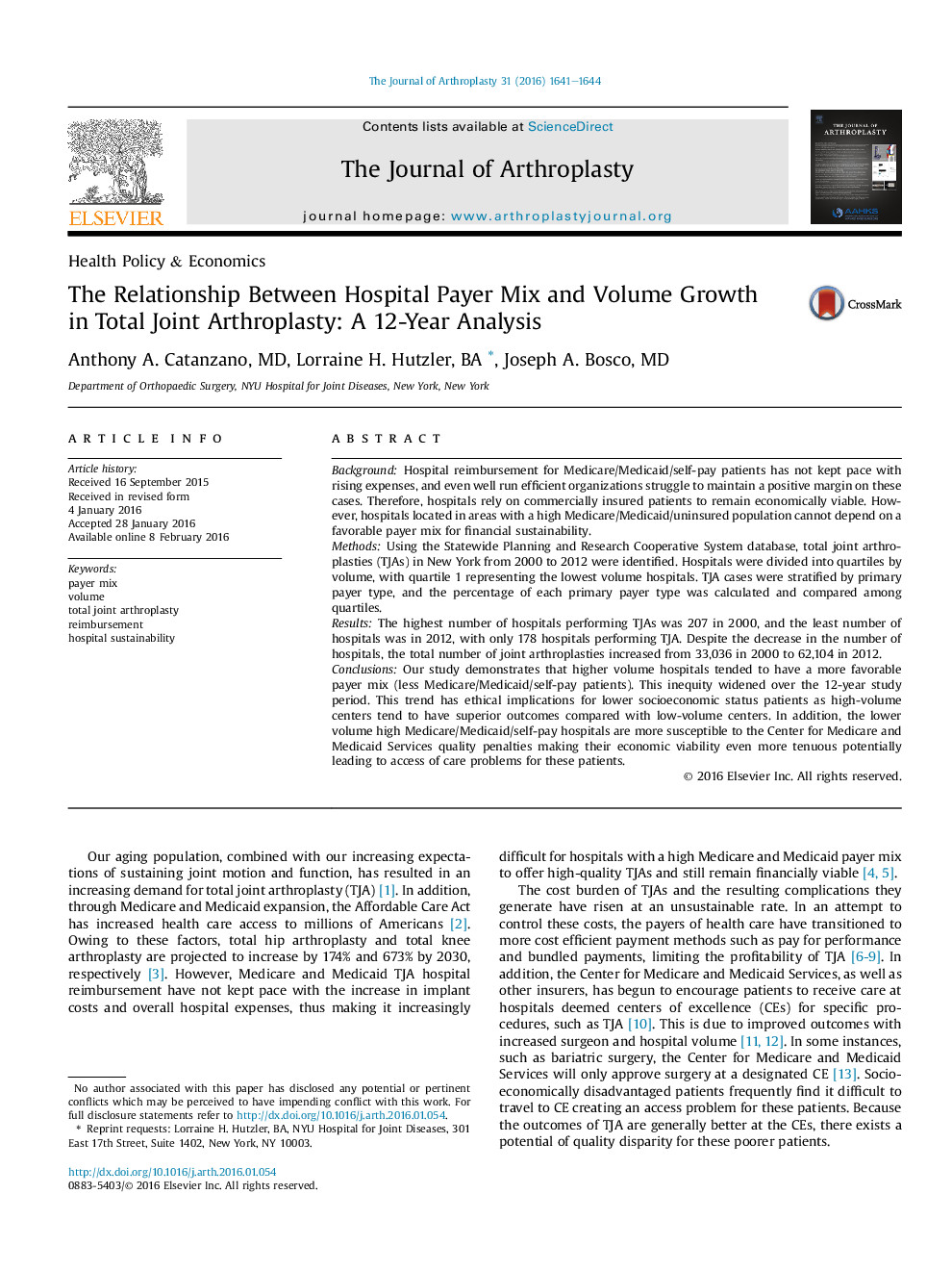| کد مقاله | کد نشریه | سال انتشار | مقاله انگلیسی | نسخه تمام متن |
|---|---|---|---|---|
| 6208559 | 1603974 | 2016 | 4 صفحه PDF | دانلود رایگان |
BackgroundHospital reimbursement for Medicare/Medicaid/self-pay patients has not kept pace with rising expenses, and even well run efficient organizations struggle to maintain a positive margin on these cases. Therefore, hospitals rely on commercially insured patients to remain economically viable. However, hospitals located in areas with a high Medicare/Medicaid/uninsured population cannot depend on a favorable payer mix for financial sustainability.MethodsUsing the Statewide Planning and Research Cooperative System database, total joint arthroplasties (TJAs) in New York from 2000 to 2012 were identified. Hospitals were divided into quartiles by volume, with quartile 1 representing the lowest volume hospitals. TJA cases were stratified by primary payer type, and the percentage of each primary payer type was calculated and compared among quartiles.ResultsThe highest number of hospitals performing TJAs was 207 in 2000, and the least number of hospitals was in 2012, with only 178 hospitals performing TJA. Despite the decrease in the number of hospitals, the total number of joint arthroplasties increased from 33,036 in 2000 to 62,104 in 2012.ConclusionsOur study demonstrates that higher volume hospitals tended to have a more favorable payer mix (less Medicare/Medicaid/self-pay patients). This inequity widened over the 12-year study period. This trend has ethical implications for lower socioeconomic status patients as high-volume centers tend to have superior outcomes compared with low-volume centers. In addition, the lower volume high Medicare/Medicaid/self-pay hospitals are more susceptible to the Center for Medicare and Medicaid Services quality penalties making their economic viability even more tenuous potentially leading to access of care problems for these patients.
Journal: The Journal of Arthroplasty - Volume 31, Issue 8, August 2016, Pages 1641-1644
